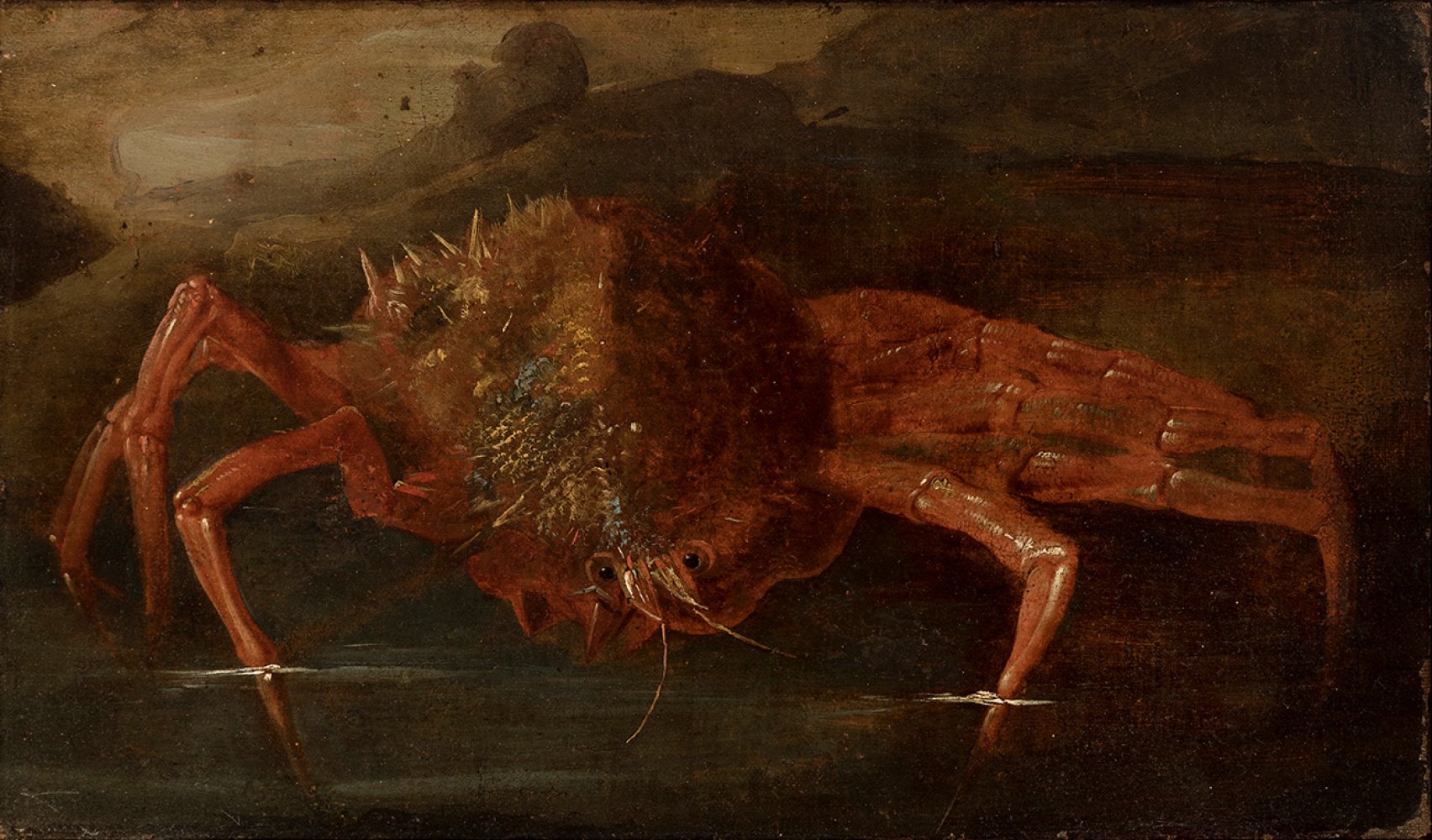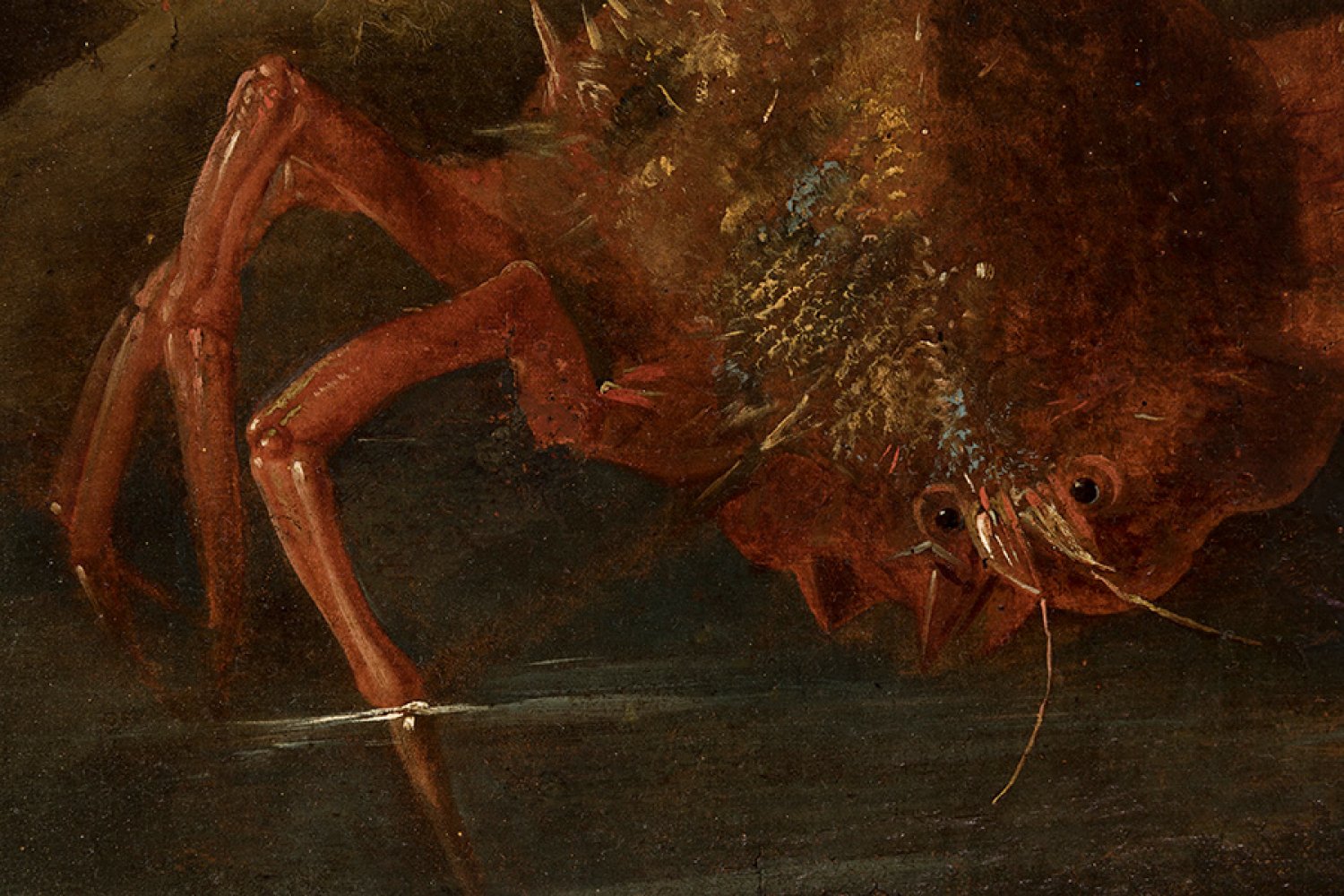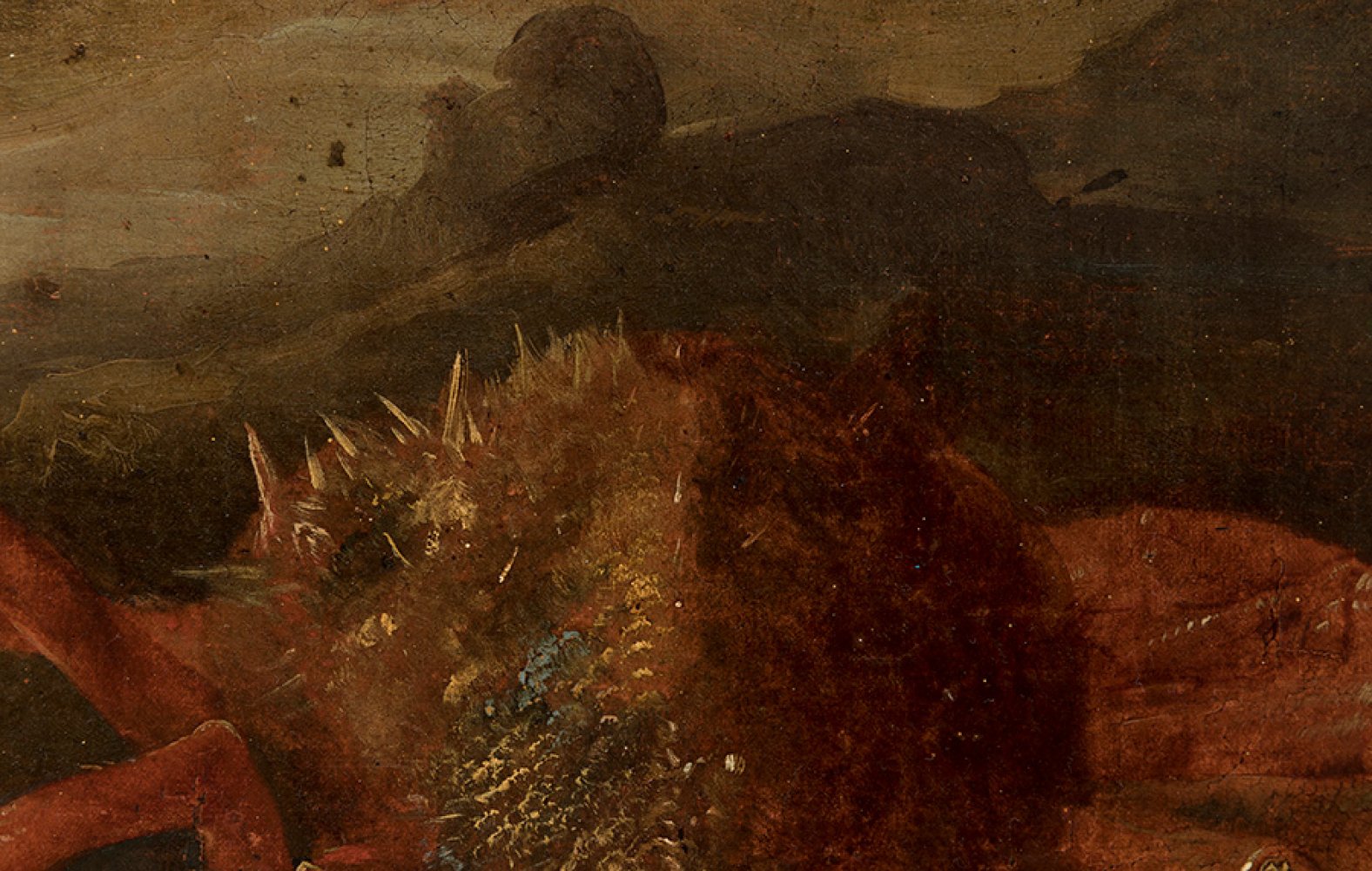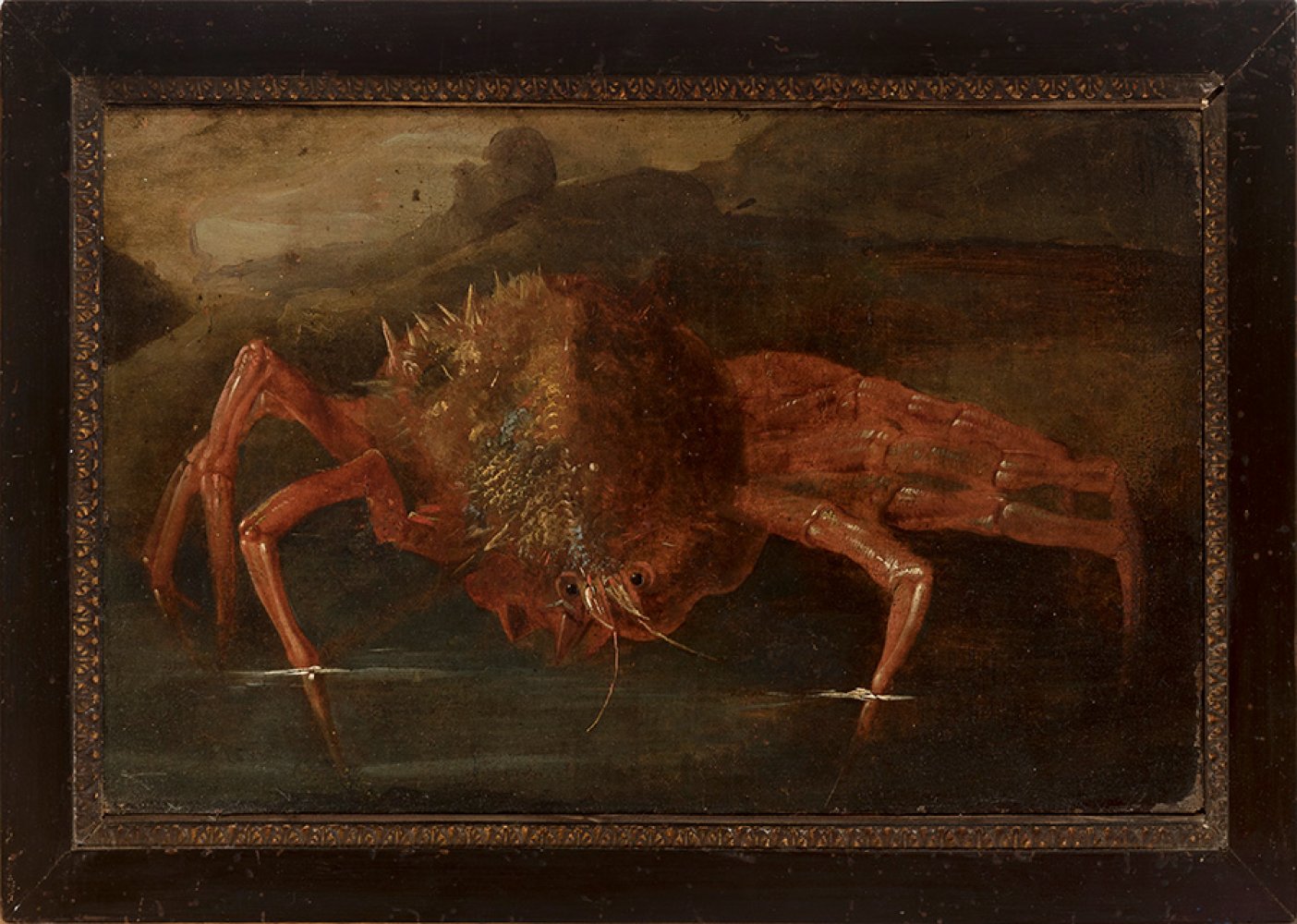56
School of GIUSEPPE RECCO (Naples, 1634 - Alicante, 1695)."Spider crab".Oil on canvas.It has a 19th
1/5
Description
School of GIUSEPPE RECCO (Naples, 1634 - Alicante, 1695).
"Spider crab".
Oil on canvas.
It has a 19th century frame.
Measurements: 30 x 50 cm; 39 x 57 cm (frame).
In spite of the few elements that are portrayed in the work, all of them are treated with mastery reflecting the special qualities. Normally, images of crustaceans are presented in the form of still lifes. However, in this work the spider crab is the absolute protagonist, not as a still life that forms part of a larger whole, but still alive in the sea that lightly covers its legs.
Both the subject matter and the aesthetic are highly reminiscent of the painting of Giacomo Recco, who was born in Naples and was probably apprenticed to his family, his father Giacomo Recco and his uncle Giovan Battista Recco. He later perfected his technique with Paolo Porpora, who had been his father's pupil. During a stay in Lombardy from 1644 to 1654 with his uncle, he was influenced by the works of Evaristo Baschenis. As his fame spread, King Charles II invited him to travel to Spain. His style is often compared to that of Giovan Battista Ruoppolo, who was also a pupil of Porpora. Early in his career he moved from painting flowers to more varied assemblages and was one of the first Italian painters to do so. Recco may have died in Alicante, Spain, before arriving in Madrid, although contemporary sources indicate that he lived there for seven years and became a Knight of the Order of Calatrava.
"Spider crab".
Oil on canvas.
It has a 19th century frame.
Measurements: 30 x 50 cm; 39 x 57 cm (frame).
In spite of the few elements that are portrayed in the work, all of them are treated with mastery reflecting the special qualities. Normally, images of crustaceans are presented in the form of still lifes. However, in this work the spider crab is the absolute protagonist, not as a still life that forms part of a larger whole, but still alive in the sea that lightly covers its legs.
Both the subject matter and the aesthetic are highly reminiscent of the painting of Giacomo Recco, who was born in Naples and was probably apprenticed to his family, his father Giacomo Recco and his uncle Giovan Battista Recco. He later perfected his technique with Paolo Porpora, who had been his father's pupil. During a stay in Lombardy from 1644 to 1654 with his uncle, he was influenced by the works of Evaristo Baschenis. As his fame spread, King Charles II invited him to travel to Spain. His style is often compared to that of Giovan Battista Ruoppolo, who was also a pupil of Porpora. Early in his career he moved from painting flowers to more varied assemblages and was one of the first Italian painters to do so. Recco may have died in Alicante, Spain, before arriving in Madrid, although contemporary sources indicate that he lived there for seven years and became a Knight of the Order of Calatrava.
Auction Details
Shipping
T&Cs & Important Info
Ask seller a question
School of GIUSEPPE RECCO (Naples, 1634 - Alicante, 1695).
"Spider crab".
Oil on canvas.
It has a 19th century frame.
Measurements: 30 x 50 cm; 39 x 57 cm (frame).
In spite of the few elements that are portrayed in the work, all of them are treated with mastery reflecting the special qualities. Normally, images of crustaceans are presented in the form of still lifes. However, in this work the spider crab is the absolute protagonist, not as a still life that forms part of a larger whole, but still alive in the sea that lightly covers its legs.
Both the subject matter and the aesthetic are highly reminiscent of the painting of Giacomo Recco, who was born in Naples and was probably apprenticed to his family, his father Giacomo Recco and his uncle Giovan Battista Recco. He later perfected his technique with Paolo Porpora, who had been his father's pupil. During a stay in Lombardy from 1644 to 1654 with his uncle, he was influenced by the works of Evaristo Baschenis. As his fame spread, King Charles II invited him to travel to Spain. His style is often compared to that of Giovan Battista Ruoppolo, who was also a pupil of Porpora. Early in his career he moved from painting flowers to more varied assemblages and was one of the first Italian painters to do so. Recco may have died in Alicante, Spain, before arriving in Madrid, although contemporary sources indicate that he lived there for seven years and became a Knight of the Order of Calatrava.
"Spider crab".
Oil on canvas.
It has a 19th century frame.
Measurements: 30 x 50 cm; 39 x 57 cm (frame).
In spite of the few elements that are portrayed in the work, all of them are treated with mastery reflecting the special qualities. Normally, images of crustaceans are presented in the form of still lifes. However, in this work the spider crab is the absolute protagonist, not as a still life that forms part of a larger whole, but still alive in the sea that lightly covers its legs.
Both the subject matter and the aesthetic are highly reminiscent of the painting of Giacomo Recco, who was born in Naples and was probably apprenticed to his family, his father Giacomo Recco and his uncle Giovan Battista Recco. He later perfected his technique with Paolo Porpora, who had been his father's pupil. During a stay in Lombardy from 1644 to 1654 with his uncle, he was influenced by the works of Evaristo Baschenis. As his fame spread, King Charles II invited him to travel to Spain. His style is often compared to that of Giovan Battista Ruoppolo, who was also a pupil of Porpora. Early in his career he moved from painting flowers to more varied assemblages and was one of the first Italian painters to do so. Recco may have died in Alicante, Spain, before arriving in Madrid, although contemporary sources indicate that he lived there for seven years and became a Knight of the Order of Calatrava.
29th December - Old Masters
Sale Date(s)
Venue Address
Aragón 346, Barcelona
Calle Velázquez 7, Madrid
Carrer de Cirilo Amorós 55, Valencia
Barcelona
08009
Spain
General delivery information available from the auctioneer
Setdart offers Worldwide shipping
PICK UP IN ROOM: You can come and pick up your lots in our offices (Barcelona, Madrid or Valencia). At the moment of the withdrawal, you will be able to accept the current conditions of the lot by means of a document that you will sign.
YOU CAN SEND ANOTHER PERSON TO PICK UP: This person must present a signed authorization that you can find in our web page by accessing from BUY AT SETDART- LOGISTICS-DOWNLOAD AUTHORIZATION DOCUMENT. You can also send an e-mail with the requested data in AUTHORIZATION DOCUMENT to admin@setdart.com
Important Information
25% buyer´s premium
21% buyer´s premium at www.setdart.com















